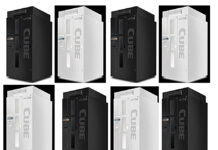WekaIO is the latest vendor plugging the Amazon S3 API into its filesystem.
The idea is to combine fast file access through WekaFS parallel access to SSDs with a bulk capacity option on cheaper disk-based object storage. Hot data goes into flash and cooler data heads for the disk drives. These can be deployed in on-premises object storage, or in the AWS cloud and in IBM Cloud Object Storage.
WekaIO has set up certified partnerships with AWS, Cloudian, IBM, Hitachi Vantara, Quantum and Scality. Customers can use these architectures to add an object storage capacity tier to their WekaFS installation. The object storage can be in the public cloud or on-premises. Object metadata is kept in flash to speed that aspect of object data access.
Customers see a single global WekaFS namespace in which there can be an object store accessed through WekaFS. Their existing Weka workflows don’t have to change to accommodate the object store.
Weka has also added a snap-to-object feature. This is a point in time copy of the entire file and object namespace, captured with a single click and pushed to an object store. From there it can be moved to a remote object namespace, providing instant hybrid workflows, disaster recovery, and test/dev capabilities. The snaphots are immutable and encrypted.
Table stakes
A tidal wave of file storage suppliers has embraced Amazon’s S3 Rest API to gain access to object storage. Participants include Dell with PowerScale, IBM (Spectrum Scale), Igneous, NetApp with ONTAP, Pure Storage with both FlashArray (CloudSnap) and FlashBlade, Qumulo, and Quobyte. Only Panasas prefers to use its own object storage with an iSCSI definition and not S3.
Object storage suppliers, such as Cloudian, Hitachi Vantara (HCP), IBM (COS) Quantum (ActiveScale), Seagate (CORTX), Scality (RING) and others have all added S3 support to their object storage.








